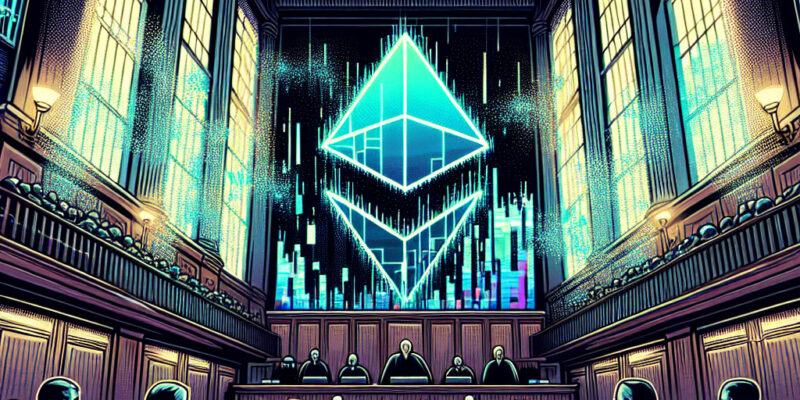Shocking Twist: MEV Bot Trial Ends in Mistrial After Jury Stalemate

In the bustling cityscape of New York, known as much for its skyscrapers as for its financial intrigue, a courtroom drama unfolded that captivated many in the cryptocurrency community. Over the course of three tension-filled weeks, a trial sought to uncover the truth behind allegations of fraud and money laundering, charges stemming from a sophisticated exploit involving $25 million on the Ethereum blockchain.
The defendants, known within crypto circles as pioneering yet controversial figures, stood accused of manipulating Ethereum through a technique involving Maximum Extractable Value, or MEV. This practice, while technically complex, is not unheard of in the digital currency realm. In essence, MEV refers to the process by which certain participants on the blockchain can extract additional profits from transactions by altering their sequence or inserting their own trades at strategic moments. While not illegal per se, the ethics and legality of how it’s performed can often tread a fine line.
Despite the prosecution’s detailed presentations and testimonies, the jury found itself in a bind. As they deliberated, the nuances of blockchain technology and the fine distinction between a legitimate financial strategy and outright manipulation may have sewn seeds of doubt. The jurors, tasked with parsing the dense tech jargon and complex financial theories, ultimately hit an impasse. Arguments were stacked against counterarguments, and neither side could sway a unanimous decision. The result? A mistrial—an outcome as shocking as it was anticlimactic given the stakes involved.
The implications of this stalemate ripple out far beyond the courtroom walls. For those deeply entrenched in the realm of cryptocurrencies, this trial was more than just a legal battle; it was a referendum on the ethics of blockchain behaviors that some label as innovative and others decry as underhanded. The lack of a clear verdict has left both sides with a sense of unfinished business and the broader community with lingering questions about how such cases might be judged in the future.
From a regulatory perspective, the mistrial underscores the challenges that legal systems face in adapting to the pace of technological innovation. The laws of finance, so painstakingly constructed over decades, struggle to keep up with the rapid development of technologies that redefine the very fabric of economic systems. This particular case might well become a touchstone for future legal proceedings, urging lawmakers and financial regulators to clarify where the lines should be drawn in an ever-evolving digital landscape.
For now, the spotlight returns to the digital realm, where developers and entrepreneurs alike must ponder the ethical frameworks of their work. While the courtroom drama has ended, the broader narrative is far from concluded. It’s a story that will likely see more chapters as the intertwining paths of technology and regulation continue to evolve.
Readers, especially those steeped in the world of blockchain and cryptocurrency, will keenly watch the reverberations of this mistrial. It serves as a poignant reminder that the digital frontier, though full of promise, is fraught with complexities that must be navigated with care. And as both innovation and scrutiny continue to grow, so too does the need for clarity and consensus on what constitutes fair play in this brave new world.













